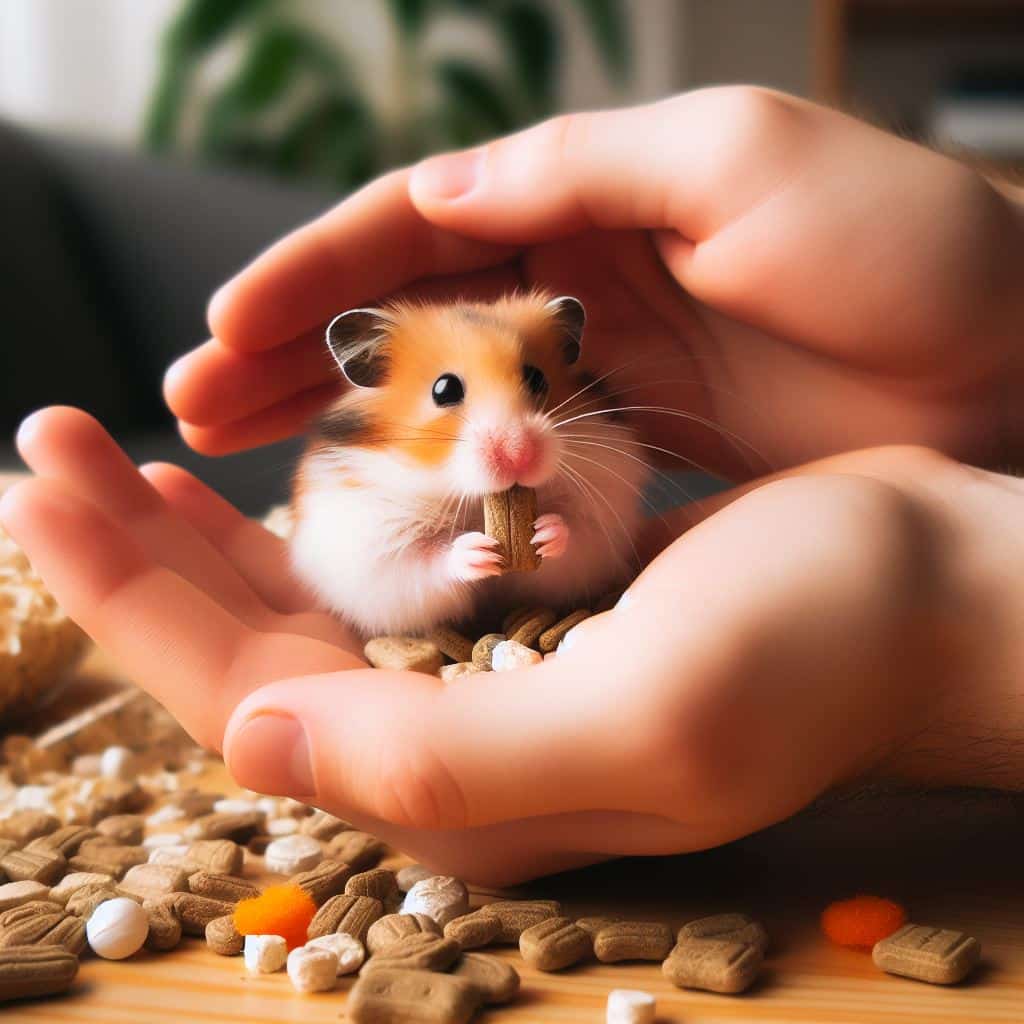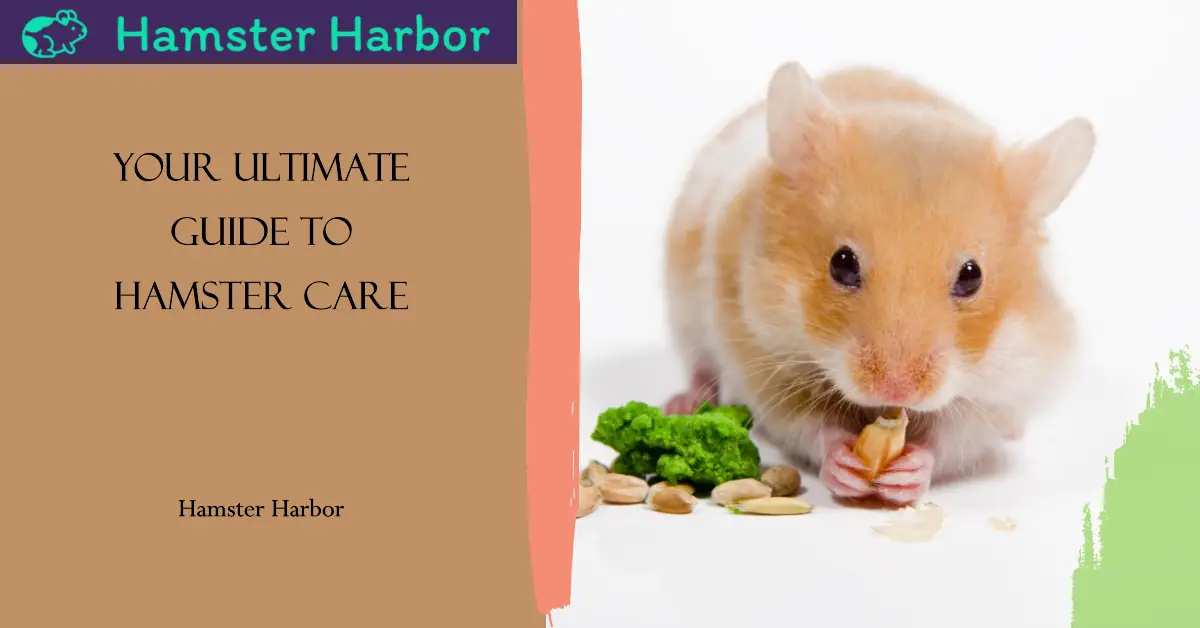Introduction
Welcome to the ultimate guide on hamster care! As hamster owners and loving parents, we want to provide our small friends with the best possible lives. Properly caring for a hamster is rewarding but also requires dedication. This guide on Hamster Harbor covers everything you need – from choosing an optimal habitat and nutrition to handling techniques for a tame, happy hamster. Read on to learn how to keep your hamster healthy and thriving for years to come!
Setting Up a Cage

Choosing the right cage for your hamster is the foundation to quality hamster care. The cage must be large enough, secure, stimulating and comfortable. Here are the key factors in setting up the ideal habitat:
Size – Bigger is always better when it comes to hamster cages. Look for cages with a minimum of 24 x 12 inches floorspace, though even larger is recommended. Hamsters are active and need plenty of room to run around.
Layout – Levels, tubes and accessories make the cage more enriching and exciting. Prioritize unbroken floor space on one level before adding platforms and tubes between levels.
Bedding – Use a soft, absorbent and dust-free bedding like aspen wood shavings or paper bedding. Spot clean soiled areas daily and replace all the bedding weekly.
Nesting – Provide fluffy, shreddable materials like toilet paper and tissues for nest building. Avoid stringy fabrics that can wrap around limbs.
Hideouts – Every hamster needs a dark, cozy hideaway nest where they can sleep undisturbed during the day. Provide one shelter for each hamster.
Accessories – Tunnels, chew toys, exercise wheels and ledges give hamsters mental and physical stimulation. Choose solid, tip-proof items sized appropriately.
Cleaning – Wash the habitat, accessories and hideouts with gentle soap and hot water weekly to prevent ammonia buildup. Rinse and dry thoroughly before returning items to the cage.
By setting up the habitat thoughtfully with your hamster’s needs in mind, you give them space to roam and places to nest, eat, play and hide. This makes for a happy hamster!
Creating a Balanced Diet

Diet is vital to hamster health, as nutritional deficiencies can cause serious illness. In the wild, hamsters eat a varied mix of seeds, vegetation, insects and the occasional treat. Recreate this balanced approach with:
High Quality Hamster Mix – The bulk of diet should be a premium seed mix with variety:
- Whole grains – wheat, barley, oats, rice
- Dried veggies – corn, carrots, green beans
- Dried fruits – apples, raisins, cranberries
- Protein sources – soybeans, lentils, peanuts
- Vitamins and minerals
Supplement with Fresh Foods:
- Vegetables – broccoli, kale, sweet potato
- Fruits – apple, banana, strawberries
- Protein – cooked chicken, boiled egg, tofu
- Occasional treats – plain yogurt, cheese, cooked pasta
Avoid human junk food and sugary fruits. Introduce new foods slowly.
Water – Fill water bottles to the brim so it doesn’t run dry. Change water daily.
Feeding Routine:
Morning – Refill food dish with 2-3 tablespoons of the seed mix. Top off water bottle.
Evening – Provide 1-2 teaspoons of fresh vegetables, fruits and protein. Check water level.
Night – Scatter feed by hiding small amounts of food mix around the cage to stimulate natural foraging.
Weaned hamsters eat about 2 teaspoons of food daily. Provide unlimited hay for nesting and snacking. Remove uneaten fresh and wet food within 24 hours to avoid spoilage. Adjust portions based on appetite and weight.
By sticking to a wholesome, balanced diet with variety, you fuel your hamster with all the nutrients they need to stay active and healthy.
Handling and Taming

Hamsters have an unfair reputation for being nippy and hostile. But with the right gentle handling techniques, even the most nervous hamster can be tamed into an affectionate pet. Here’s how to build trust:
Before You Start:
- Allow at least 3 days for your new hamster to settle into their habitat before trying to handle them. Never wake a sleeping hamster.
- Sit patiently next to the cage and speak softly to accustom the hamster to your voice and scent. Offer small treats by hand to associate you with good things.
- Always wash hands before and after contact to prevent transmitting illness. Clip nails to avoid scratches.
Let Them Come to You:
- To start taming, open the cage and allow the hamster to approach you first. Place your hand inside palm up with a treat. Don’t grab at them. This establishes you are not a threat.
- Once they reliably take treats from an open hand, you can attempt gentle petting along their back while distracting with a treat. Stop if they seem distressed.
Lift Carefully from Below:
- When your hamster seems comfortable being touched, place one hand gently but securely underneath front paws, cradle back legs with other hand, and carefully transfer them to your palm.
- Ensure you properly support all feet – grasping hamsters tightly in mid-air frightens them. Allow them to climb onto your hand themselves at first.
Create Positive Associations:
- Keep taming sessions brief at first (5 minutes max) to avoid stressing small animals. Allow them to return to the safety of their cage at any point.
- Distract with treats and toys during gentle handling. Speak reassuringly and avoid loud noises or sudden movements.
- Reward calm behavior with favorite snacks and verbal praise. End interaction at first sign of distress.
Patience Is Key!

It may take multiple weeks for timid hamsters to warm up through consistent, gentle handling. Always let your hamster indicate their readiness to progress contact. With time, patience, and tasty incentives, you will both come to eagerly anticipate daily bonding playtime.
Conclusion
From cage setup to diet, handling techniques and more – you now have the key fundamentals to keep your small friend healthy and happy for their 2-3 year lifespan! While hamsters require some specific care considerations, they can make delightful, rewarding pets. Remember these core tips:
- Prioritize habitat size with platforms to climb and tunnels to explore
- Stick to a balanced diet with fortified seed mix plus fresh vegetables and occasional fruit treats
- Allow shy hamsters lots of adjustment time before gentle handling with positive reinforcement
- Provide both social interaction and solitary nesting/sleeping spaces
Apply these building blocks of hamster care, and you will soon have a tame companion eager to interact with you daily. Pair that enriched environment with top-quality hamster food, clean bedding, fresh water and hideaways, and your furry friend will thrive in their home sweet home!
For even more details on ideal hamster care for happy, healthy pets, explore the rest of the Hamster Harbor hamster care resources. Let us know if you have any other hamster questions!

